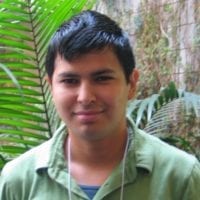
Brachypodium distachyon: A Model System for Engineering C4 Traits
The overall goal of my project this summer was to use Brachypodium distachyon, a new model grass species, as a tool to further develop our understanding of the genes that regulate the morphology of the C3 leaf. This information will be useful for the engineering of the C4 photosynthetic pathway into C3 plants such as rice in order to increase yield. Before I arrived, seeds were treated with ethyl methanesulfonate (EMS) to create mutagenized family lines. I screened M2 families for mutants that contained varying leaf shapes. I used leaf-sectioning techniques, microscopy and imaging software to determine which mutant family lines have defects in vein spacing. C4 plants have a high density of veins and this may be a prerequisite for C4 photosynthesis.
My Experience
The overall goal of my project this summer was to use Brachypodium distachyon, a new model grass species, as a tool to further develop our understanding of the genes that regulate the morphology of the C3 leaf. This information will be useful for the engineering of the C4 photosynthetic pathway into C3 plants such as rice in order to increase yield. Before I arrived, seeds were treated with ethyl methanesulfonate (EMS) to create mutagenized family lines. I screened M2 families for mutants that contained varying leaf shapes. I used leaf-sectioning techniques, microscopy and imaging software to determine which mutant family lines have defects in vein spacing. C4 plants have a high density of veins and this may be a prerequisite for C4 photosynthesis.
